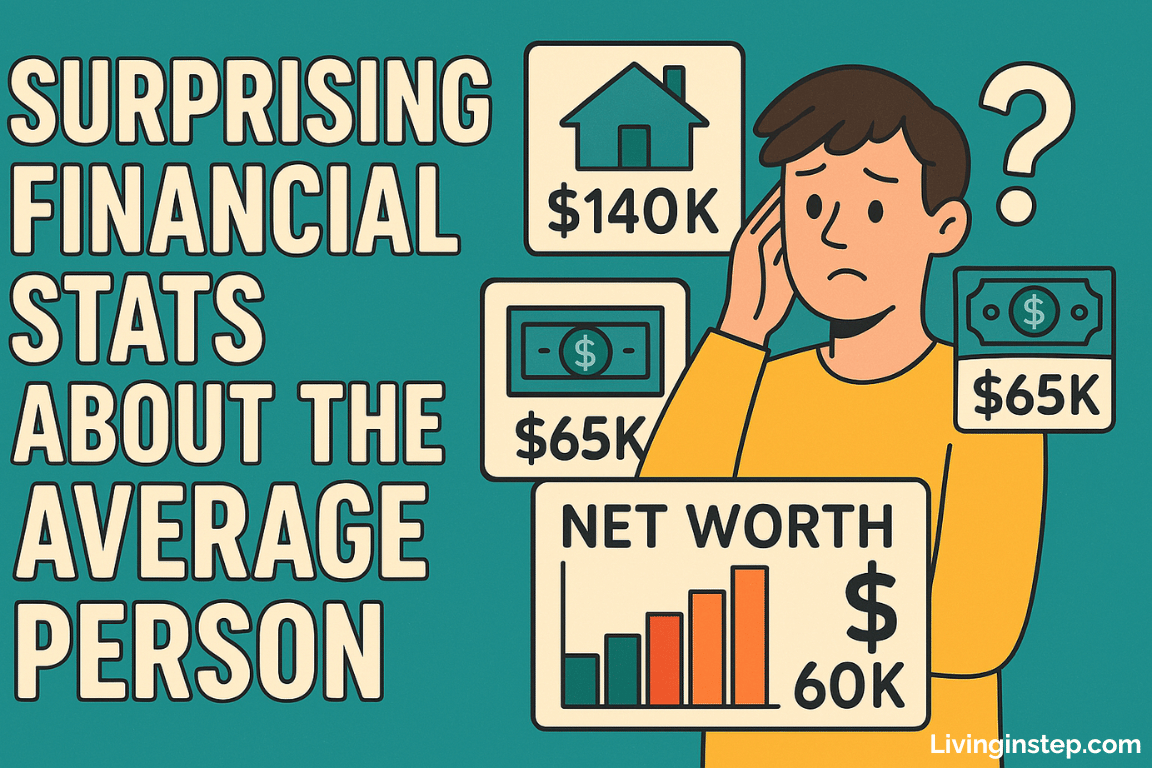Ever wonder how your finances compare to everyone else’s?
You’re not alone
There’s something quietly comforting
and a little bit unsettling
about knowing where you stand
Are you ahead?
Falling behind?
Or just somewhere in the messy middle?
Looking at the numbers doesn’t solve anything
But it does give you perspective
And in today’s financial climate
a little clarity goes a long way
Median income in the U.S.
Let’s start with the basics: how much people actually make
According to the latest data from the U.S. Census Bureau:
- Median household income: $74,580 (2022)
- Median individual income: Roughly $40,000–$45,000
That means half of people earn less than that
Even in dual-income homes
So if you’re not pulling in six figures?
You’re not behind
You’re exactly where most people are
The average credit score
This one might surprise you
- Average FICO score in the U.S.: 717 (as of 2023)
That’s considered “good”
But the distribution tells a better story:
- Around 15% of Americans have scores below 600
- Roughly 23% are in the excellent (800+) range
Which means most people are sitting in the middle
Juggling bills
Carrying balances
Trying to keep things stable
How much people are saving for retirement
Here’s where things start to get uncomfortable
According to Vanguard’s 2023 report:
- Average 401(k) balance: $112,572
- Median balance: $27,376
And broken down by age:
- Under 25: ~$5,200
- 25–34: ~$30,000
- 35–44: ~$76,000
- 45–54: ~$142,000
- 55–64: ~$207,000
- 65+: ~$232,000
It’s not nothing
But it’s not enough to fully retire for most people
Which is why so many are planning to work longer
or rely heavily on Social Security
Social Security: What people can expect
The average monthly Social Security benefit (as of 2024):
- $1,907/month
That’s $22,884/year
For millions, it’s their main source of income after retirement
And it’s why even a modest nest egg
can make a major difference
Social Security isn’t designed to fully replace your income
It’s designed to supplement your savings
But for most, it’s the entire plan
Spending habits (and where the money goes)
The average U.S. household spends about $72,967 per year (BLS data, 2022)
Here’s where it goes:
- Housing: $24,298
- Transportation: $12,295
- Food: $9,343
- Personal insurance & pensions: $7,873
- Healthcare: $5,850
- Entertainment: $3,458
- Cash contributions (gifts/charity): $2,755
- Apparel: $1,945
- Education: $1,335
It adds up
And it shows why so many people live paycheck to paycheck
Even on a decent income
Net worth reality check
According to the Federal Reserve’s most recent Survey of Consumer Finances (2022):
- Median net worth in the U.S.: $192,900
- Average net worth: $1.06 million (skewed by the ultra-wealthy)
By age, median net worth looks more like this:
- Under 35: ~$13,900
- 35–44: ~$91,300
- 45–54: ~$168,600
- 55–64: ~$212,500
- 65–74: ~$266,400
The lesson?
Most people aren’t wealthy
They’re just doing their best to stay above water
and save when they can
Debt is everywhere
Here’s the breakdown of average U.S. household debt (2023, Experian):
- Credit card debt: $6,501
- Auto loans: $23,792
- Student loans: $28,950
- Mortgage debt: $236,443
- Total debt balance: $101,915 (per adult consumer)
Debt is normal
But that doesn’t mean it’s comfortable
And it definitely doesn’t mean people are thriving
So how do you actually compare?
You might be ahead
You might be right in the middle
Or you might be trying to catch up
But either way—
you’re not alone
These numbers aren’t meant to shame or impress
They’re meant to give you a sense of where things really stand
Because no one talks about this stuff
Everyone assumes everyone else is doing better
But the truth?
Most people are quietly figuring it out
Just like you
Note: This content is for entertainment purposes only and is not financial advice. Please consult a qualified financial advisor for guidance specific to your situation.








